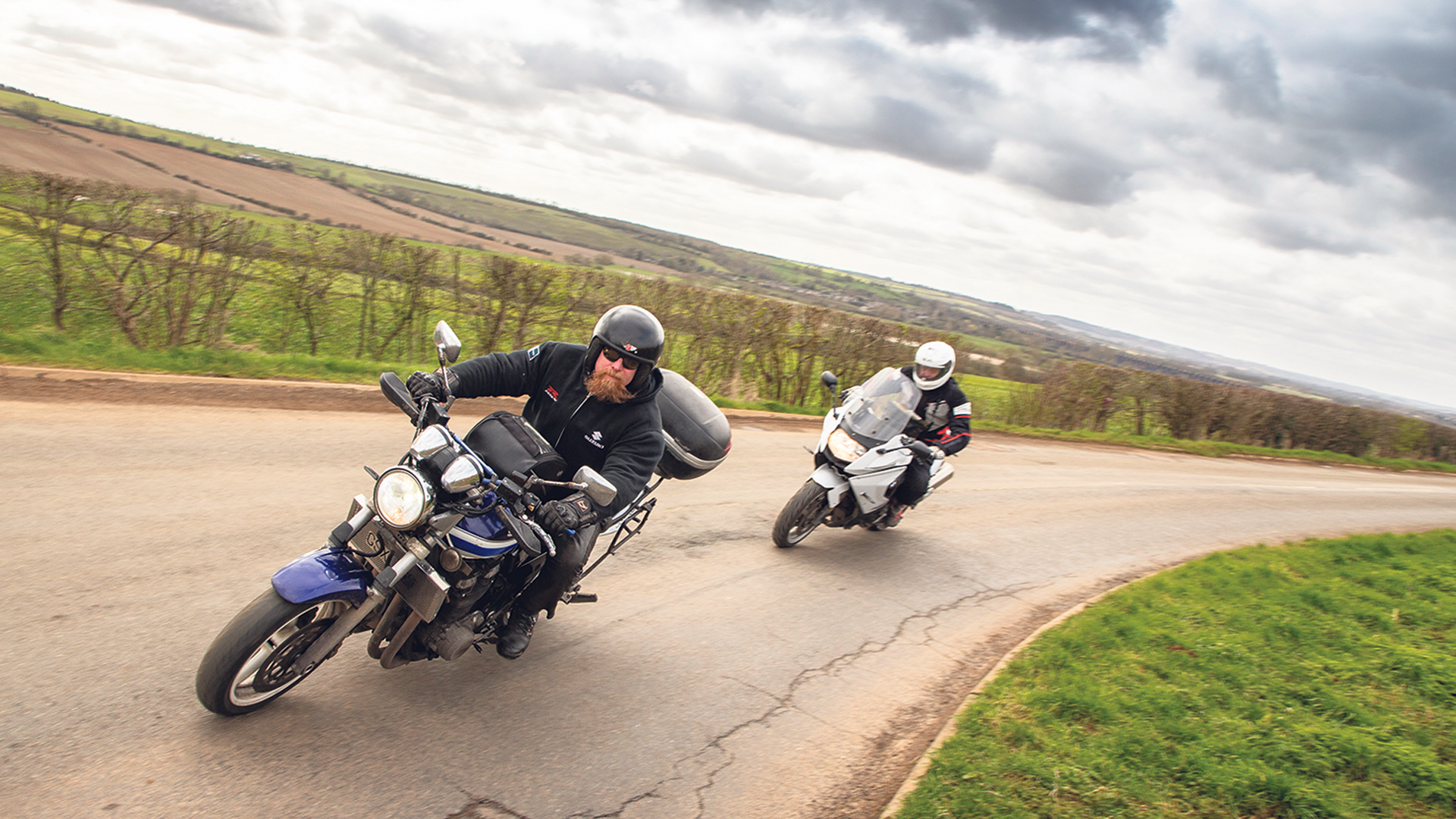
Left Bends
It’s the right way to go left
How to ensure you get lefthand bends right first time, every time
Many riders turn in too early for bends, this not only severely limits their view ahead but also causes them to run wide on the exit of lefthand bends and too close to the centre line on righthanders – both significantly increasing the risk of hitting oncoming vehicles.
Running a bit deeper into the corner before beginning to turn the bike helps to combat this, but does rely upon the rider’s ability to physically turn the bike quickly. To do this, the machine’s front wheel needs to be loaded by braking and by the engine being totally off-throttle on entry.
When you know that a bend is coming up, you’ll need a plan on how to deal with it. Look for clues as to the severity of the bend, using hedgerows, lampposts, road signs etc to give you as much information as possible. Adjust your speed, either by rolling off, selecting a lower gear or braking, depending on how much you need to slow, and take up position near the crown of the road to maximise your vision, but do be aware of oncoming traffic.
Coming into a corner too fast raises two potential safety issues. Firstly, you can override your visibility. Due to the topography of the road, your ability to see through a bend is reduced and if your speed is too high, then you’ll have less time to deal with something unexpected. You should be able to stop in the distance you can see is clear. Secondly, it makes it much harder to keep to your line. Excess speed will cause you to run wide on the exit as you will likely be carrying too much lean angle when you should be upright and on the power.
The key element here is to be patient – you should maintain a neutral throttle and wait until your view of the road opens up so that you know exactly what lies ahead. Only at that point can you fully commit and start winding on the power to drive through the bend.
Once you’re through the turn and have a clear road ahead, you can set up for whatever is next. If it’s another left you may already be near the crown, so if it’s appropriate stay where you are, but for a right-hander you should move towards the inside kerb.
QUICK TIPS
It’s simple geometry
Use the front, not rear, brake on the way into a corner and completely shut the throttle. This puts the bike’s weight onto its nose and makes it easier to steer.
Prioritise safety
The ideal line should be as wide as possible to allow you to spot that exit point as early as possible – but never compromise safety. Take into account side junctions, potholes, overgrown hedges and oncoming traffic.
It’ll feel weird!
You’ll need to build yourself up to taking a later apex because it will feel like you’ve overshot the corner at first. Take it slowly and chip away at it.
Get ready for what’s next
Once you’re through the exit you can adopt a centre-lane position, constantly reading the road for the next challenge.
It’s less of a turn
A late apex means you’re in the corner for less time – this is not only safer, but you’ll find the bike much easier to control as you won’t be fighting to keep it on line.
Be adaptable
Have a plan going in, then as your view changes, update your plan depending on the new information available to you. Don’t be rigid with your positioning.
Use your body
Turning late means turning hard, make sure your weight is on the balls of your feet and push down through the inside peg as you push and release the inside handlebar.


